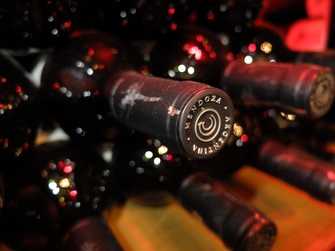
We arrived after two days of buses; Puerto Montt to Santiago which was overnight and expectedly boring, and then Santiago to Mendoza the next morning, which was an incredible drive up and over the steep Andes Mountains, passing by the famous Aconcaga Volcano National Park and through several tunnel sections of the mountain.
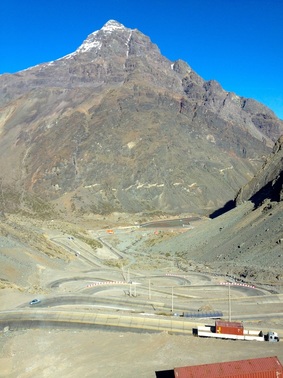 switchbacks galore!
switchbacks galore! When we finally arrived in Mendoza we took a cab into the center part of town and went searching for a hostel. It was surprising to us that the prices for accommodation were MUCH higher than we had been told or were written our Lonely Planet book that is only one year old. I suppose we shouldn't have been that surprised considering the current politics in the country.
The thing about Argentina...
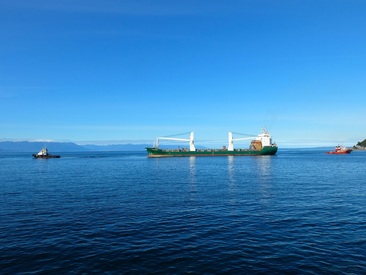 tugboat tug-of-war in Puerto Montt
tugboat tug-of-war in Puerto Montt The very simplified explanation is something like this: The country has had a long history of unstable periods of high economic development followed by extreme lows. One consequence is a very large middle class where most citizens are fairly well-off and demand more expensive things. When things run out, demand increases drastically, people pay more, more supply comes in, and the peso loses value; hence inflation, and then it is too expensive to import things anymore so the cycle restarts, or something like that. During the periods of low economic development, huge amounts of debt are accumulated (as is likely to happen again this year) and so the problem just gets worse and worse.
What this means for travellers like us is something kind of disturbingly good, which is actually terrible to comprehend. We came into Argentina with knowledge of the situation so we took out a bunch of $US cash from Bolivia and Chile so that we could exchange it for Argentine pesos at a MAJOR discount; the "official" rate is between 7-8 pesos per $US, but we were able to exchange on the "Blue Market" (random people hoarding $US) for between 10-12 peso's per $US. The reason is simple; think about your RRSP's (or 401K's if you're in the US) - you have worked your whole life to save up x amount of dollars for retirement, but imagine if all of a sudden in one year inflation was 25% (something that could happen at home too) meaning that your savings account just lost a quarter of its value!!! Do that for several years in a row. Now you have nothing. Your whole life savings can now buy you a loaf of bread (if you buy now).
Wages have HAD to increase by about the same amount as inflation or everyone would have starved to death by now, but the fact remains, no savings exist in their accounts. So, what people do, and what I am sure anyone should do, is hoard $US since inflation on the dollar is more stable (perceivably) so it should hold more value over time. But the Argentine Government has made it illegal to withdraw $US from banks so the only way for people to get it is illegally, mainly from tourists.
While in-fluxing $US to the people seems like a win-win situation for tourists like us and the people we trade with (assuming that the peso continues to drop), it is completely undermining the Government and might be making things worse in the long run.
One last thing I will comment on about this situation is that one of the government strategies to control inflation, which started in January 2014, is to hold major food basket prices at a fixed rate. That means that the cost of flour, eggs, milk, sugar, bread, etc. are to remain fixed for a indeterminate amount of time. How does this help? Well, inflation is defined as the cost of a basket of goods containing those food items and some other things. So, in short, the government is trying to fake lower inflation rates (the US does this too). That is why the measure is really dependant on who you ask (the government claims that it is about half of what it really is). The good news for us as travellers is it is MUCH cheaper to buy groceries and cook our own food than to eat at a restaurant (RESTAURANTS ARE SO EXPENSIVE!). The bad news is that EVERYTHING else is very expensive (accommodation, clothing, souvenirs, travel, etc.).
Back to our trip
 fountain of rainbows
fountain of rainbows The next morning we wandered around the city which was nice. There are many parks scattered all over the place and the streets are very wide and spacious. The city was re-designed after a massive earthquake in 1861 in order to ensure that there are safe areas in the streets and parks to mingle if another massive earthquake happens in the future. It was nice enough but we kept on having trouble with timing - Argentina subscribes to a 1-4pm siesta every day and restaurants don't serve dinner until 8 or 9pm! Took some getting used to.
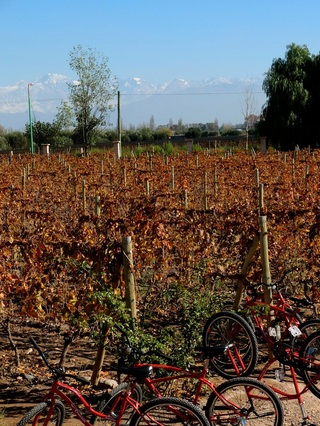 bikes + wine = awesome!
bikes + wine = awesome! 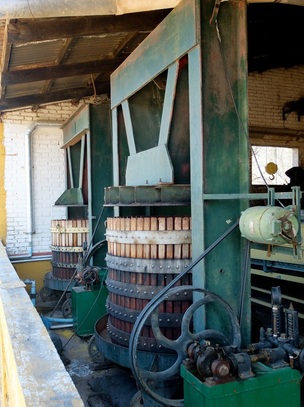 grape pressing machines
grape pressing machines 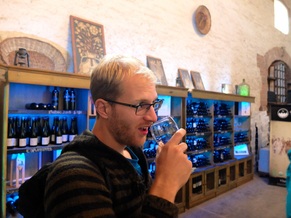 sniff with your mouth open!
sniff with your mouth open! Chilled beans make good ice-cream!
-Chelsea
 RSS Feed
RSS Feed